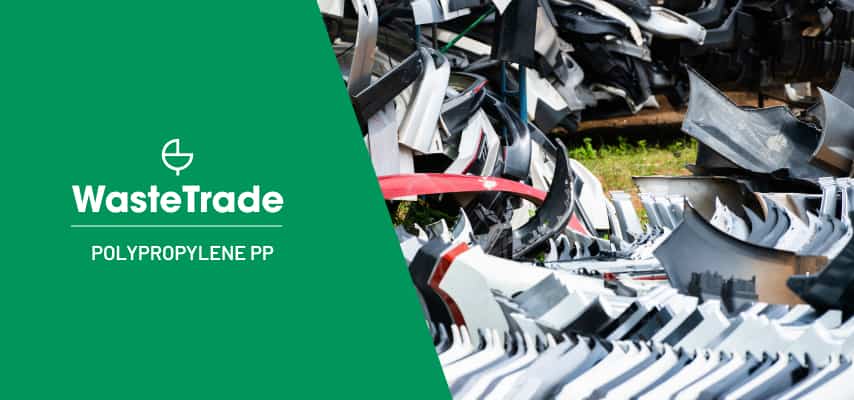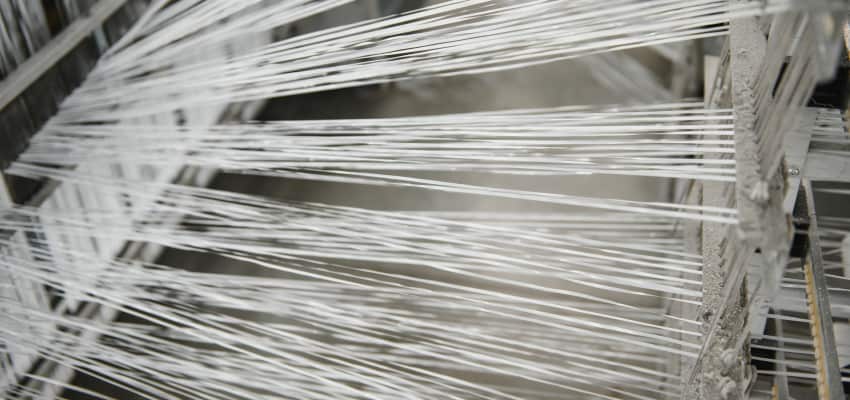Polypropylene (PP) Recycling

Polypropylene (PP) is a thermoplastic polymer that belongs to the polyolefin family. It is widely used for its high resistance to moisture, chemicals, and high temperature. It has a low density, making it light-weight and durable, and is also easy to mold and process into various shapes and forms.
Polypropylene is often used in the production of packaging materials, such as containers, trays, and bags, as well as household items, such as food containers, toys, and textiles. It is also used in the construction industry for pipes, fittings, and various molded products.
Polypropylene (PP) Properties

Polypropylene PP is a strong, lightweight, and versatile thermoplastic polymer. It has excellent resistance to many types of chemicals and is highly durable. PP is commonly used in a variety of applications such as packaging, automotive components, and household items.
PP has a high melting point, which makes it suitable for use in applications that require high temperature resistance. It also has a low coefficient of friction, which makes it ideal for use in products that require low friction, such as gears and bearings. PP is also resistant to fatigue and has a high tensile strength, which makes it suitable for use in products that undergo repeated stress and strain, such as packaging materials and automotive parts.
Another key property of PP is its resistance to moisture and impact. This makes it an ideal material for use in the packaging industry, where it is often used to produce containers for food and beverage products. PP also has good optical clarity, which makes it suitable for use in products that require transparency, such as packaging for cosmetic and personal care products.
Polypropylene Sheet

Polypropylene sheets are a type of thermoplastic sheet that are made from polypropylene. They are commonly used in a variety of applications, including packaging, printing, and signage. Polypropylene sheets have a high resistance to moisture, chemicals, and high temperature, making them ideal for use in harsh environments. They are also lightweight, flexible, and easy to process, making them a popular choice for a range of industries.
Polypropylene sheets can be formed into a variety of shapes and sizes, and can be easily customized to meet the specific requirements of different applications. They are also available in a range of colors and finishes, making them ideal for use in visual applications where aesthetics are important.
Is Polypropylene Recyclable?

Yes, polypropylene is recyclable. However, the recycling process for polypropylene is not as straightforward as it is for other types of plastics. This is because polypropylene is a type of plastic that is difficult to recycle due to its chemical structure.
Despite this, there are several companies and organizations that specialize in recycling polypropylene and turning it into new products. The recycled polypropylene can be used in a variety of applications, including packaging, textiles, and automotive parts. Additionally, recycled polypropylene is often used to create new polypropylene products, making the recycling process both environmentally friendly and cost-effective.
Polypropylene (PP) Applications

PP is widely used in the packaging industry due to its durability, resistance to moisture, and excellent clarity. It is also commonly used in the manufacturing of automotive components such as bumpers, dashboards, and door trims. PP is also used in household items such as furniture, toys, and kitchenware.
In addition, PP is used in the construction industry for producing pipes and fittings due to its high temperature resistance and ability to withstand high pressure. It is also used in the medical industry for producing surgical instruments, laboratory equipment, and packaging for pharmaceutical products. Furthermore, PP is used in the textile industry for producing fabrics and fibres for carpets, upholstery, and clothing.
PP’s properties make it a versatile material for a wide range of applications, and its low cost and easy processability make it a popular choice in many industries.
Polypropylene (PP) Recyclability
PP is a highly recyclable material, and recycling can help to reduce waste and conserve resources. The recycling process for PP involves collecting and sorting the plastic waste, shredding it into small pieces, and then melting and moulding it into new products. Recycled PP can be used to produce a wide range of products, such as plastic pallets, garden furniture, and storage bins.
The first step in recycling PP is the collection and sorting of the plastic waste. This is typically done by waste management companies who specialise in the recycling of plastics. Once the PP waste has been collected and sorted, it is transported to a recycling facility where it is cleaned and processed.
The cleaning process involves removing any impurities and contaminants from the PP waste. This is done by washing the plastic pieces in hot water and then drying them. The PP waste is then shredded into small pieces, which can be melted down and moulded into new products.
During the melting and moulding process, the shredded PP waste is heated to a high temperature until it reaches a molten state. The molten plastic is then extruded into long strands or moulded into specific shapes. These newly formed products can then be used to create a variety of items, including plastic pallets, garden furniture, and storage bins.
Recycling PP not only helps to reduce waste and conserve resources, but it also helps to reduce the amount of greenhouse gas emissions that are generated during the production of new plastic products.
Recycle Polypropylene (PP) With WasteTrade
If you are a business owner looking to recycle your PP waste streams, WasteTrade can help you connect with ethical recyclers around the world. WasteTrade is a platform that connects businesses with waste management companies specialising in recycling plastics. By registering with WasteTrade, businesses can find the best recycling solutions for their PP waste streams. Register with WasteTrade today to take the first step towards a more sustainable business.
